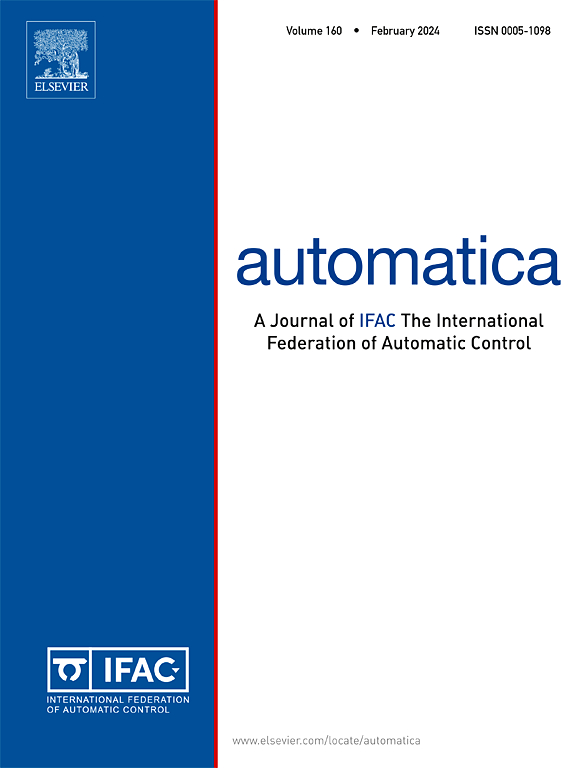Data-driven stabilization of switched and constrained linear systems
IF 4.8
2区 计算机科学
Q1 AUTOMATION & CONTROL SYSTEMS
引用次数: 0
Abstract
We consider the design of state feedback control laws for both the switching signal and the continuous input of an unknown switched linear system, given past noisy input-state trajectories measurements. Based on Lyapunov–Metzler inequalities and on a matrix S-lemma, we derive data-dependent bilinear programs, whose solution directly returns a provably stabilizing controller and ensures or performance. We further present relaxations that considerably reduce the computational cost, still without requiring stabilizability of any of the switching modes. Finally, we showcase the flexibility of our approach on the constrained stabilization problem for an unknown perturbed linear system. We validate our theoretical findings numerically, demonstrating the favorable trade-off between conservatism and tractability achieved by the proposed relaxations.
数据驱动的开关和约束线性系统稳定化
我们考虑的是在给定过去噪声输入-状态轨迹测量值的情况下,为未知开关线性系统的开关信号和连续输入设计状态反馈控制律。基于 Lyapunov-Metzler 不等式和矩阵 S 困境,我们得出了与数据相关的双线性程序,其解直接返回可证明的稳定控制器,并确保 H2 或 H∞ 性能。我们还进一步提出了可大大降低计算成本的松弛方法,但仍不要求任何切换模式具有稳定性。最后,我们展示了在未知扰动线性系统的受限稳定问题上我们方法的灵活性。我们通过数值验证了我们的理论发现,证明了所提出的松弛方法在保守性和可操作性之间实现了有利的权衡。
本文章由计算机程序翻译,如有差异,请以英文原文为准。
求助全文
约1分钟内获得全文
求助全文
来源期刊

Automatica
工程技术-工程:电子与电气
CiteScore
10.70
自引率
7.80%
发文量
617
审稿时长
5 months
期刊介绍:
Automatica is a leading archival publication in the field of systems and control. The field encompasses today a broad set of areas and topics, and is thriving not only within itself but also in terms of its impact on other fields, such as communications, computers, biology, energy and economics. Since its inception in 1963, Automatica has kept abreast with the evolution of the field over the years, and has emerged as a leading publication driving the trends in the field.
After being founded in 1963, Automatica became a journal of the International Federation of Automatic Control (IFAC) in 1969. It features a characteristic blend of theoretical and applied papers of archival, lasting value, reporting cutting edge research results by authors across the globe. It features articles in distinct categories, including regular, brief and survey papers, technical communiqués, correspondence items, as well as reviews on published books of interest to the readership. It occasionally publishes special issues on emerging new topics or established mature topics of interest to a broad audience.
Automatica solicits original high-quality contributions in all the categories listed above, and in all areas of systems and control interpreted in a broad sense and evolving constantly. They may be submitted directly to a subject editor or to the Editor-in-Chief if not sure about the subject area. Editorial procedures in place assure careful, fair, and prompt handling of all submitted articles. Accepted papers appear in the journal in the shortest time feasible given production time constraints.
 求助内容:
求助内容: 应助结果提醒方式:
应助结果提醒方式:


